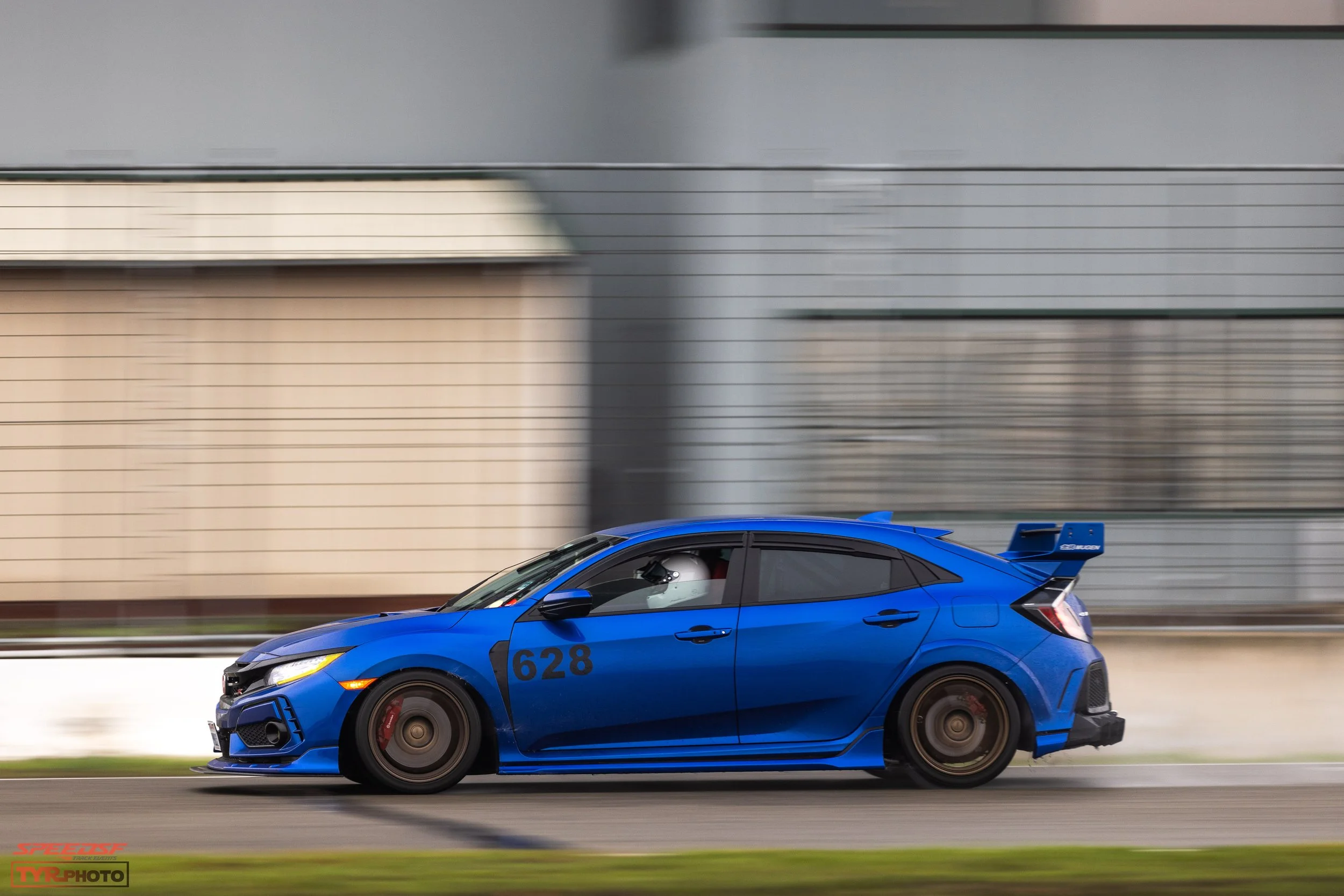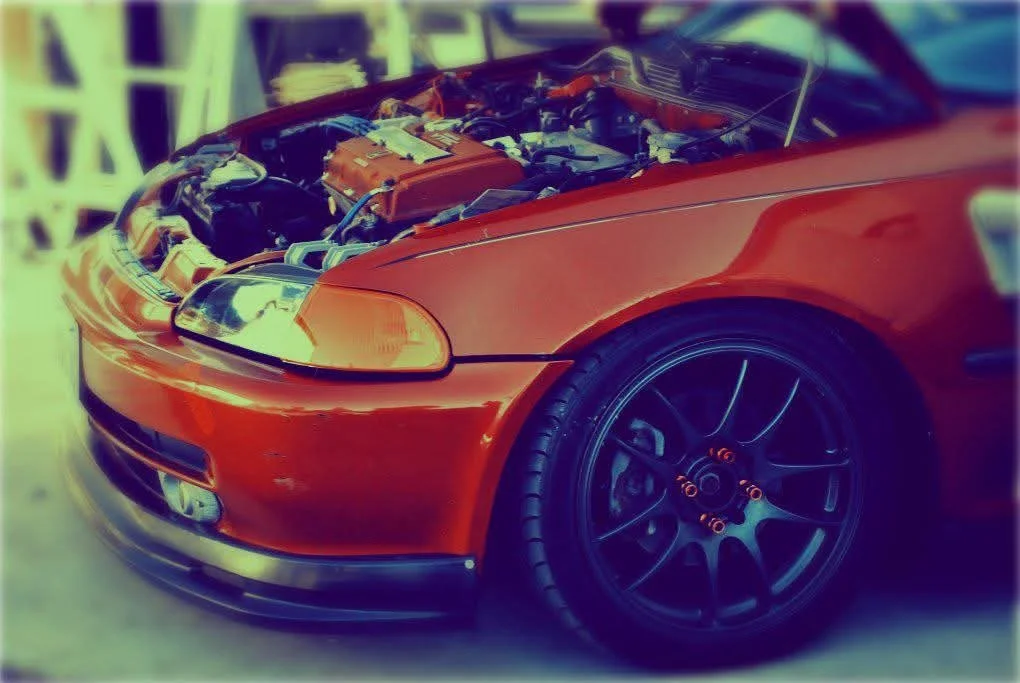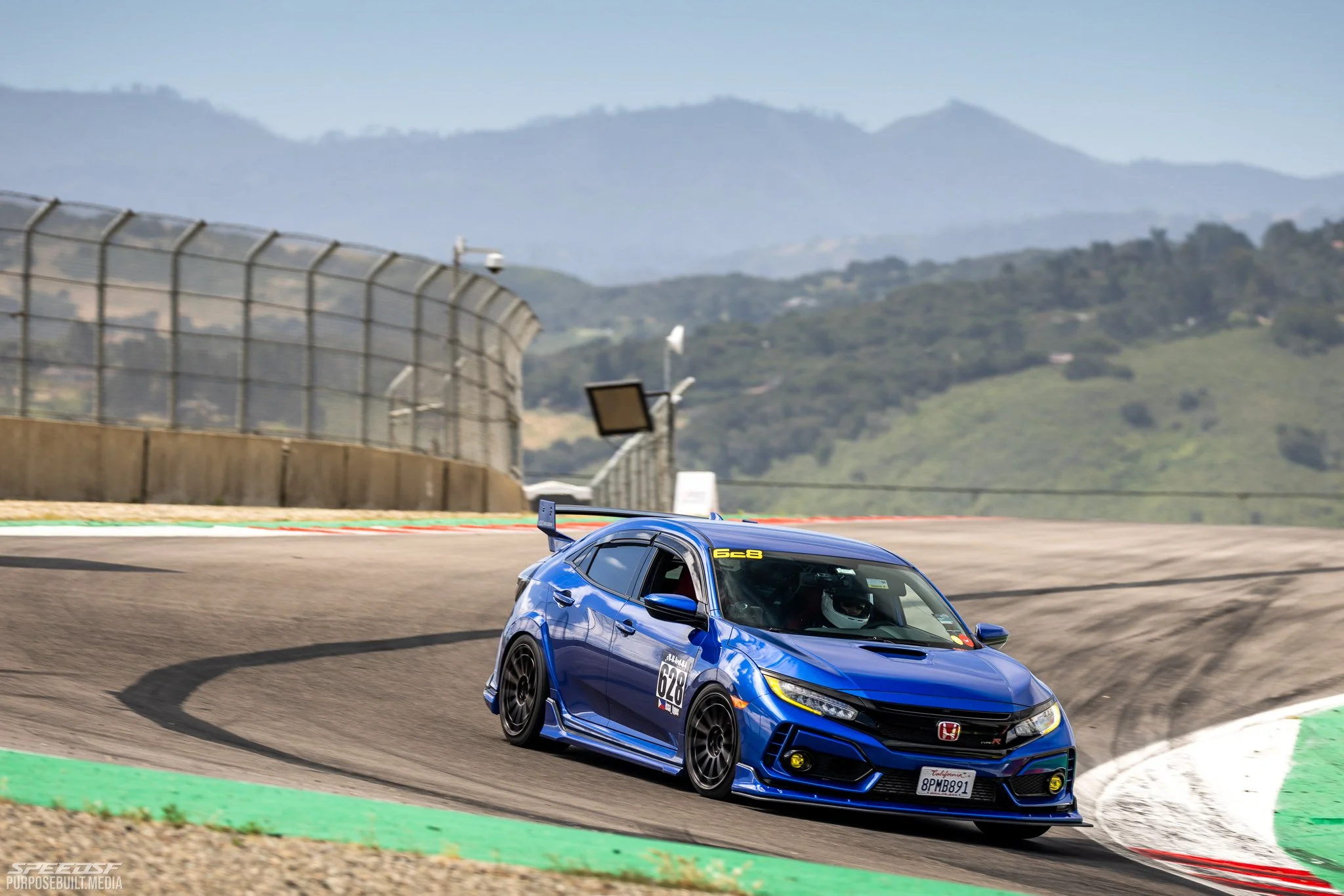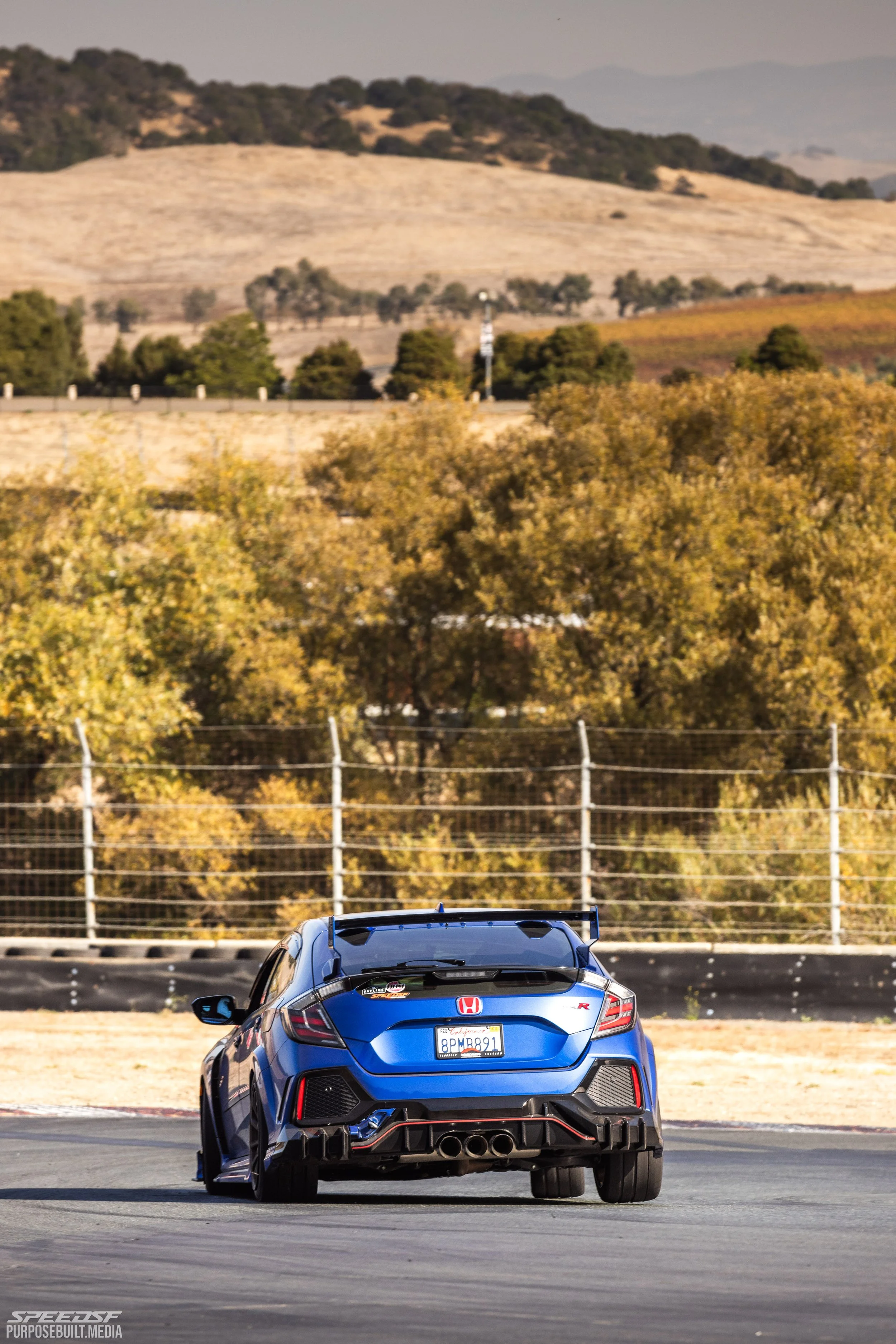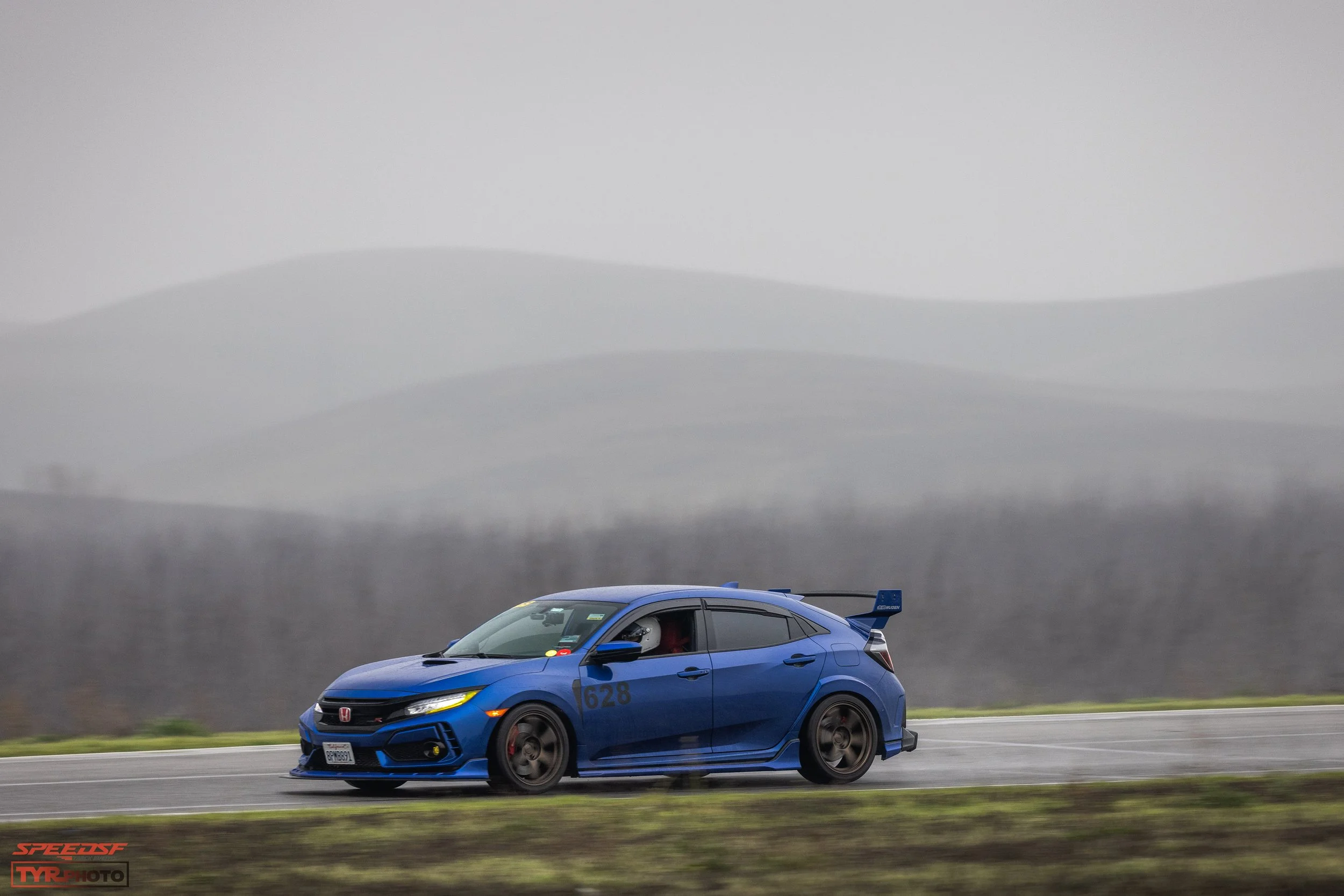Ricky’s FK8: Bitten by the Bug
Ricky Dilinila was bitten by the Gran Turismo bug harder than most. As a ten year old with no real sense of cars beyond what he saw his uncle working on some weekends, this game came as a huge shock. “It was the first video game that really stuck,” he said.
Afternoons spent on Gran Turismo led to nights spent playing Need For Speed and Midnight Club. Naturally, the basis for the latter game piqued his curiosity; eventually leading him and his teenage friends down to Ringwood, San Jose, to watch the older gearheads race between stoplights.
The thrill of witnessing the real thing was enough to satisfy him for some time, but his calling for greater adventure led him not only to relocate to Virginia after joining the Navy, but to pick up an EK Civic of his own.
The natural progression continued after he left the Navy and moved home to California, where he met new friends who graduated into touge driving, and a few who had even tried taking their cars to the track.
This was early-2017, and the FK8’s recently released press shots from the Geneva Motor Show had been keeping him up at night. “I fell in love with that shape, and I knew I had to have one.”
Ownership would have to wait a few painful years filled with close calls and a lot of research. “After a while, driving through winding roads was fun, but wanted to minimize the risk,” he began, “so I started looking for track days with a good safety reputation.”
Right as COVID hit, Ricky was able to align his stars. A friend working at a Honda dealership informed him that a clean example of an FK8 was available for a deal, and with the plan of finally checking off that last box on his driving list, he bought it and began researching all he’d need for track work.
The nerves were a serious impediment, but a surmountable one. “I went to Wine Country Motorsports to buy some safety gear, and putting on the helmet was a tough one – I started feeling claustrophobic immediately,” he laughed.
The car being moderately sporty from the factory meant Ricky could’ve left it stock, but decided to splurge on a set of A052s and Espelir springs, as well as a Hasport rear motor mount. Basics like these were deemed excessive by some friends, but perhaps they bought him some peace of mind.
Armed with just his tools, Ricky made that fateful drive down through the fog into Monterey to pop his trackday cherry with Speed SF at Weathertech Raceway Laguna Seca. His nervousness hadn’t yet dissipated by the time he arrived, and amidst all the rules, flags, and pre-checks he had on his mind, he had to fear the worst. “There was so much on my mind that morning. Was I gonna crash? Would my car overheat?” he confessed. That morning tested his resolve.
Those fears faded quickly, however. When the adrenaline started surging after those first tentative laps, he could start to settle into a rhythm and appreciate how the car was already ready for light track work. “I was shocked with how good the car was out of the box. The car ran without a hiccup,” he recalled, “and that pushed me towards modifying the car a little bit more.”
He put one rule in place to curb unnecessary spending: only modify when he felt close to the limits of the car’s current state. Along with this instinctive rule came lots of research to ensure he made the right choice. “I’m sometimes indecisive, so I have to do a lot of digging before I can come up with a solution that I’m cool with,” he explained.
Returning to the track with nothing new aside from Castrol SRF brake fluid, started honing his skills. The package was plenty for his skillset and, thankfully, his somewhat conservative approach meant his Advans were lasting quite a while.
Nearly all of the miles Ricky’s put on the FK8 have been track miles.
Though he had reserved the performance upgrades for only when necessary, he didn’t have such a rule in place when it came to the appearance of the car. A Mugen kit with an adjustable wing caught his eye, thanks to Gil from HHWHH.
It was Drew, his friend and sounding board, who suggested better rotors and pads, and later, after Ricky’d gotten comfortable pushing the car, told him to try playing with the rear wing setting.
Ricky recognized the impact this minor change had made immediately. This came at the price of a less-than-loose aero balance which Ricky tried to improve with the addition of a 3” Racebred splitter.
Paragon two-piece rotors and RS pads all around have the factory braking system adequate for repeated heavy laps - a respectable system that can support the 3,150-pound FK8.
Raising an inside rear helps the Civic steer.
Roughly ten track days in, Ricky was happy pushing the car with its benign understeer. However, too much confidence with the front-limited car led to a mistake at Sonoma’s Turn 5, where he pushed off the track into the weeds, but thankfully missed the wall. “Then, I knew I needed to change the balance,” he said.
The car needed to be freer mid-corner, and subsequent changes were simple: EVS lower ball joints for additional negative camber up front, Spoon front and rear rigid collars, and an Eibach rear anti-roll bar elicited a more neutral balance with a hint of oversteer. While retaining the stock dampers and shocks helped him keep it versatile enough for comfortable street driving while still controlling the body nicely on track.
Though the car was a bit nervous in some of the mid-speed sections, its general balance was much more manageable, and the influence was obvious. After receiving a little coaching from Jessie Jns, he lopped 2.7 seconds off his previous personal best at Sonoma.
That was last year, before his kid arrived. Ricky’s been bound up lately with fatherly obligations, but he hopes to return to the track this winter and pick up where he left off: getting to terms with a slightly oversteery machine. Pushing the car harder has been a bit tougher on his budget, and the A052s he’s so fond of last about ⅓ as long as they did when he started, but that’s a small price to pay for feeling you’ve mastered a platform.
Pushing harder has revealed some limitations in the car’s powertrain; namely its tendency to overheat. Part of his “off-season” maintenance has been addressing the cooling limitations and improving the system with a race radiator and an intercooler from PWR.
Besides tweaking some shims to drag another half-degree of camber from the front end, he’s mostly happy with the setup. “Maybe I’ll buy some coilovers when my suspension breaks, but for now I’m fine,” he admitted. With a parent’s priorities dictating his spending, he can’t mod too freely, but adding more stuff was never his style, anyways.
Get a good car, make the minimal mods necessary for track work, hire a good coach, and try to extract everything else out of yourself. That cost-effective approach has served him well, and I’m sure his return will be not only the respite he deserves, but the chance to show what simulator work during the off-season has done for his driving ability.
Thanks to Drew, Jessie, Hil, Jay, Racebred, Paragon, CAE, Yokohama, Originkrafts, Micro Tech Detailing, and my wife.

